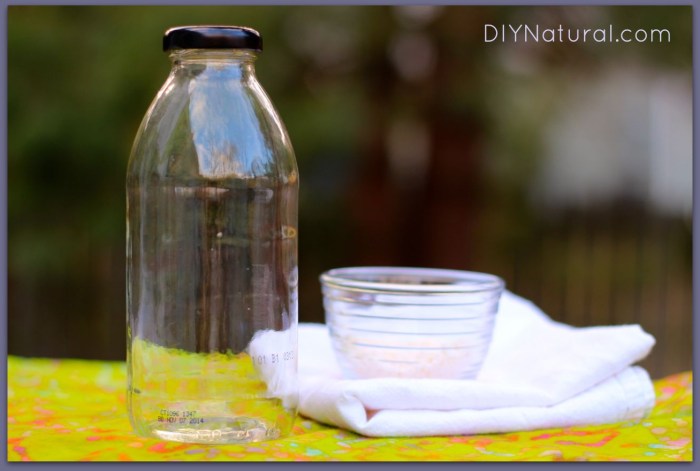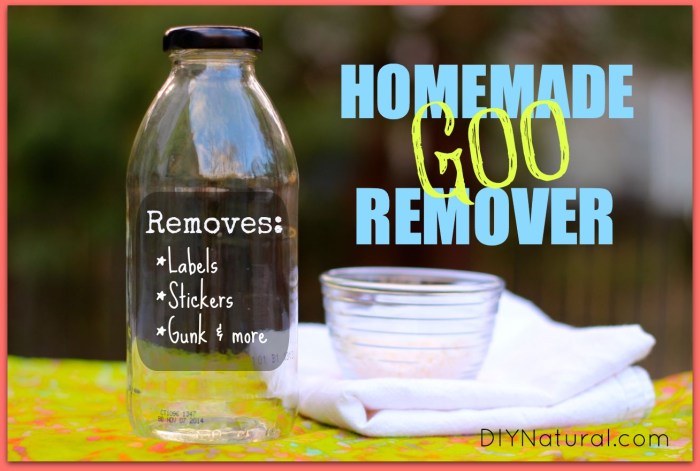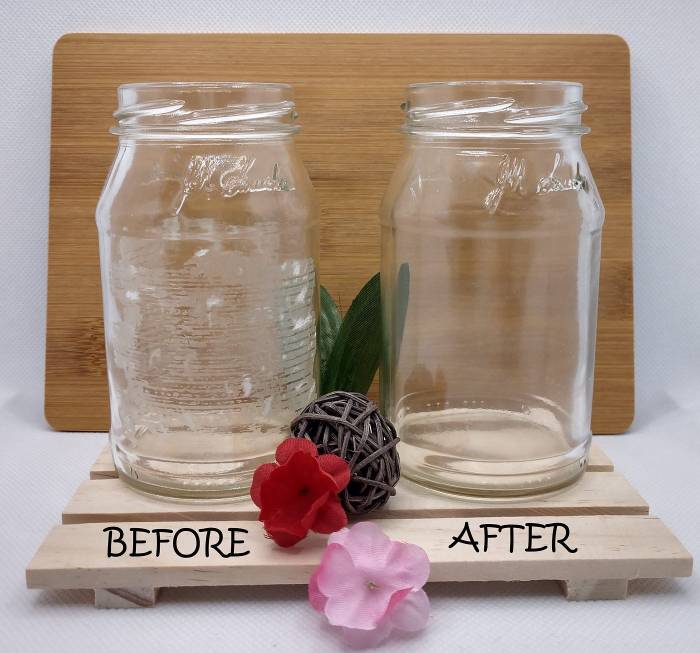DIY adhesive remover offers a cost-effective and eco-friendly alternative to commercial products. From stubborn glue to sticky residue, these simple solutions can tackle a variety of adhesive challenges, often using ingredients you already have in your pantry.
This guide explores common DIY adhesive remover recipes, providing step-by-step instructions and safety tips. We’ll also delve into alternative methods, discuss environmental considerations, and highlight common mistakes to avoid. Whether you’re tackling a craft project or cleaning up a household mishap, this guide empowers you to remove adhesive with confidence.
Cleaning and Finishing

After successfully removing the adhesive, it’s crucial to clean the surface thoroughly to ensure a pristine finish. This step involves removing any remaining residue or discoloration, restoring the surface to its original condition.
Cleaning the Surface
Cleaning the surface after adhesive removal is essential to prevent any future problems or damage. This step involves removing any remaining residue or discoloration and restoring the surface to its original condition.
- Wipe the surface with a damp cloth: Start by wiping the surface with a damp cloth to remove any loose adhesive residue or debris. Use warm water and a mild detergent, avoiding harsh chemicals that might damage the surface.
- Use a scraper for stubborn residue: If some adhesive residue remains, gently scrape it off using a plastic scraper or a dull knife. Be careful not to scratch the surface.
- Apply a cleaning solution: For tougher adhesive residue, apply a specialized cleaning solution designed for removing adhesives. Follow the instructions on the product label carefully.
- Rinse and dry the surface: After cleaning, rinse the surface thoroughly with water and dry it completely with a clean cloth.
Removing Remaining Residue
Even after cleaning, some adhesive residue might remain, especially if the adhesive was particularly stubborn. Here are some methods to remove remaining residue:
- Use a solvent: Solvents like acetone, rubbing alcohol, or mineral spirits can effectively dissolve adhesive residue. Apply the solvent to a clean cloth and gently rub the residue. Remember to test the solvent on an inconspicuous area first to ensure it doesn’t damage the surface.
- Apply a commercial adhesive remover: Several commercial adhesive removers are available in the market specifically designed to remove stubborn adhesive residue. Follow the instructions on the product label carefully.
- Use a heat gun: Applying heat from a heat gun can soften the adhesive residue, making it easier to remove. Be careful not to overheat the surface, as it might damage it.
- Try a baking soda paste: Create a paste by mixing baking soda with water and apply it to the residue. Let it sit for a few minutes, then scrub it gently with a soft-bristled brush.
Restoring the Surface
Once the adhesive residue is removed, it’s essential to restore the surface to its original condition. This may involve polishing, sanding, or repainting, depending on the type of surface and the extent of the damage.
- Polishing: For surfaces like metal or glass, polishing can help remove any scratches or blemishes caused by the adhesive removal process.
- Sanding: For surfaces like wood or plastic, sanding can help smooth out any rough patches or unevenness caused by the adhesive removal process.
- Repainting: If the surface is significantly damaged, repainting may be necessary to restore its original appearance.
Alternative DIY Methods
Sometimes, store-bought adhesive removers might not be readily available, or you might prefer a more eco-friendly approach. Fortunately, there are several DIY methods you can try to remove adhesive from various surfaces. These methods utilize readily available household items and often work effectively, especially for less stubborn adhesives.
Using Heat
Applying heat can soften certain adhesives, making them easier to remove.
- Hairdryer: A hairdryer is a convenient tool for applying gentle heat to soften adhesives. Direct the hot air onto the adhesive for a few minutes, then try to peel it off. This method works well for adhesives like tape or glue sticks.
- Heat Gun: For tougher adhesives, a heat gun can provide more intense heat. However, exercise caution as excessive heat can damage the surface. Use the heat gun on a low setting and move it continuously over the adhesive to prevent overheating.
- Iron: You can use an iron with a low heat setting to soften adhesive. Place a thin cloth over the adhesive and iron over it gently. Be careful not to apply too much pressure, as it could damage the surface.
It is important to note that using heat on delicate surfaces like plastics or fabrics can lead to warping or discoloration. Always test the heat method on an inconspicuous area first to ensure it doesn’t cause any damage.
Freezing
Freezing can also help remove adhesive. The cold temperature can cause the adhesive to become brittle and easier to break off.
- Ice Pack: Place an ice pack or a bag of frozen vegetables directly on the adhesive for several minutes. This method is effective for removing adhesives from smooth surfaces like glass or metal.
- Freezing Spray: Some specialty stores offer freezing sprays that can be applied directly to the adhesive. These sprays are designed to quickly freeze the adhesive, making it easier to remove.
Freezing works best for adhesives that are sensitive to temperature changes. It is not as effective for strong or waterproof adhesives. Additionally, freezing can damage some surfaces, so it’s essential to test it on an inconspicuous area first.
DIY adhesive remover can be a lifesaver for those stubborn sticky messes, but sometimes you need a little extra help. For instance, if you’re dealing with a particularly strong adhesive, you might want to consider using a product like avodart , which is designed to break down stubborn bonds. Just remember to always test any adhesive remover on a hidden area first to ensure it doesn’t damage the surface you’re working with.
Safety Precautions
While DIY adhesive removers can be effective, it’s crucial to prioritize safety when working with them. These solutions often contain strong chemicals that can irritate skin, eyes, and respiratory systems. Taking the necessary precautions can help prevent accidents and ensure a safe cleaning experience.
Protective Gear
It’s essential to wear appropriate protective gear when using DIY adhesive removers. This helps shield your body from potential harm caused by the chemicals.
- Gloves: Wear gloves made of a material that is resistant to the specific chemicals in your chosen remover. Nitrile or latex gloves are good choices for many DIY solutions.
- Eye Protection: Safety glasses or goggles are crucial to protect your eyes from splashes or fumes. Choose glasses that fit snugly and offer good coverage.
- Respiratory Protection: In well-ventilated areas, a simple dust mask may be sufficient. However, if you’re working in a confined space or using a strong remover, a respirator with appropriate filters is recommended.
Safe Handling and Storage
- Ventilation: Work in a well-ventilated area to minimize exposure to fumes. Open windows and doors, or use a fan to circulate air.
- Storage: Store DIY adhesive removers in their original containers, tightly sealed, and away from heat and direct sunlight. Keep them out of reach of children and pets.
- Labeling: Clearly label containers with the contents and any safety warnings.
- Disposal: Dispose of leftover solutions according to local regulations. Never pour them down the drain or into the environment.
First Aid
It’s important to know what to do in case of accidental exposure to DIY adhesive removers.
- Skin Contact: Remove contaminated clothing and immediately wash the affected area with soap and water for at least 15 minutes. Seek medical attention if irritation persists.
- Eye Contact: Flush eyes with plenty of water for at least 15 minutes, holding eyelids open to ensure thorough rinsing. Seek immediate medical attention.
- Ingestion: Do not induce vomiting unless directed by a medical professional. Seek immediate medical attention.
- Inhalation: Move to fresh air immediately. If breathing is difficult, seek medical attention.
Common Adhesive Removal Mistakes
It’s easy to get carried away when trying to remove stubborn adhesive, but rushing or using the wrong techniques can lead to more problems than solutions. Here are some common mistakes people make when removing adhesive with DIY methods and how to avoid them.
Using Excessive Force
Applying too much pressure when scraping or scrubbing adhesive can damage the surface you’re working on. This is especially true for delicate surfaces like wood, paint, or fabric. Excessive force can also make the adhesive harder to remove and lead to scratches or gouges.
- Always start with gentle pressure and gradually increase it if needed.
- Use a soft-bristled brush or a plastic scraper to avoid scratching the surface.
- Consider using a heat gun or hairdryer to soften the adhesive before attempting to remove it.
Using the Wrong Remover
Not all adhesive removers are created equal. Some are designed for specific types of adhesives, while others are more general-purpose. Using the wrong remover can be ineffective and may even damage the surface you’re working on.
- Read the product label carefully to ensure it’s suitable for the type of adhesive you’re trying to remove.
- If you’re unsure, test the remover on an inconspicuous area first to see how it reacts.
- Avoid using harsh chemicals on delicate surfaces like wood or fabric.
Leaving Adhesive Residue
Even after removing the bulk of the adhesive, there may be some residue left behind. This residue can be difficult to remove and may attract dirt and grime.
- After removing the adhesive, clean the area thoroughly with a damp cloth and mild soap.
- For stubborn residue, you can try using a citrus-based cleaner or a commercial adhesive remover.
- Avoid using abrasive cleaners or scrubbers, as they can damage the surface.
Not Protecting Surrounding Areas
When using adhesive removers or solvents, it’s important to protect surrounding areas from damage. Spills or splashes can stain or damage surfaces.
- Cover surrounding areas with a drop cloth or plastic sheeting.
- Use painter’s tape to protect edges and corners.
- Wear gloves and eye protection to avoid contact with the remover.
Environmental Considerations: Diy Adhesive Remover

While DIY adhesive removers can be effective, it’s crucial to consider their environmental impact. Many common ingredients, like acetone and mineral spirits, are volatile organic compounds (VOCs) that contribute to air pollution and can harm human health. Additionally, improper disposal of these products can lead to soil and water contamination.
Eco-Friendly Alternatives
Fortunately, there are several eco-friendly alternatives to harsh chemical removers. These methods are gentler on the environment and often safer for you and your family.
- Vegetable Oils: Oils like olive oil or coconut oil can be surprisingly effective at softening and removing adhesive. Apply the oil to the adhesive, let it sit for a few minutes, then gently scrape it off.
- Natural Solvents: Citrus-based cleaners and vinegar are natural solvents that can break down some adhesives. These options are biodegradable and less likely to harm the environment.
- Reusable Scrapers: Instead of disposable plastic scrapers, consider using reusable options made from metal or bamboo. These tools can be cleaned and reused repeatedly, reducing waste.
Minimizing Waste and Reusing Materials
To further reduce your environmental footprint, consider these practices:
- Reuse Containers: Instead of throwing away empty adhesive remover containers, clean them thoroughly and repurpose them for other uses.
- Compostable Materials: If you use natural adhesive removers like vegetable oils, you can often compost the leftover residue. Check with your local composting program for guidelines.
- Reduce Single-Use Items: Whenever possible, choose reusable materials over single-use items. For example, opt for reusable sticky notes or labels instead of disposable ones.
Conclusion

Tackling sticky situations with DIY adhesive removers can be a rewarding experience. You’ve learned about a variety of effective and readily available solutions, from gentle vegetable oils to powerful solvents. These methods offer a cost-effective and environmentally conscious alternative to commercial products.
While DIY methods provide flexibility and affordability, it’s essential to understand their limitations. Some adhesives might require stronger solutions, and certain surfaces may be sensitive to certain ingredients. It’s always recommended to test the remover on an inconspicuous area first.
Benefits of DIY Adhesive Removers
DIY adhesive removers offer several benefits:
- Cost-Effective: Most ingredients are readily available at home or in grocery stores, making them budget-friendly.
- Environmentally Friendly: Many DIY solutions use natural ingredients, minimizing the environmental impact compared to commercial products.
- Versatile: Different DIY removers can be tailored to specific adhesives and surfaces.
Limitations of DIY Adhesive Removers
While DIY methods are generally effective, they also have limitations:
- Effectiveness Varies: The effectiveness of DIY removers can depend on the type of adhesive, surface, and environmental factors.
- Potential Damage: Some DIY solutions might damage delicate surfaces or materials.
- Time-Consuming: DIY methods might require more time and effort compared to commercial products.
Experimentation and Finding the Right Solution
The beauty of DIY adhesive removers lies in their adaptability. Don’t be afraid to experiment with different solutions and techniques to find the most effective one for your specific needs. Remember to test the remover on a hidden area first and follow safety precautions.
By embracing DIY adhesive remover solutions, you can tackle sticky situations with confidence and minimize your environmental impact. Remember to experiment with different recipes and methods to find what works best for you. With a little creativity and the right ingredients, you can effectively remove adhesive and restore surfaces to their original condition.
